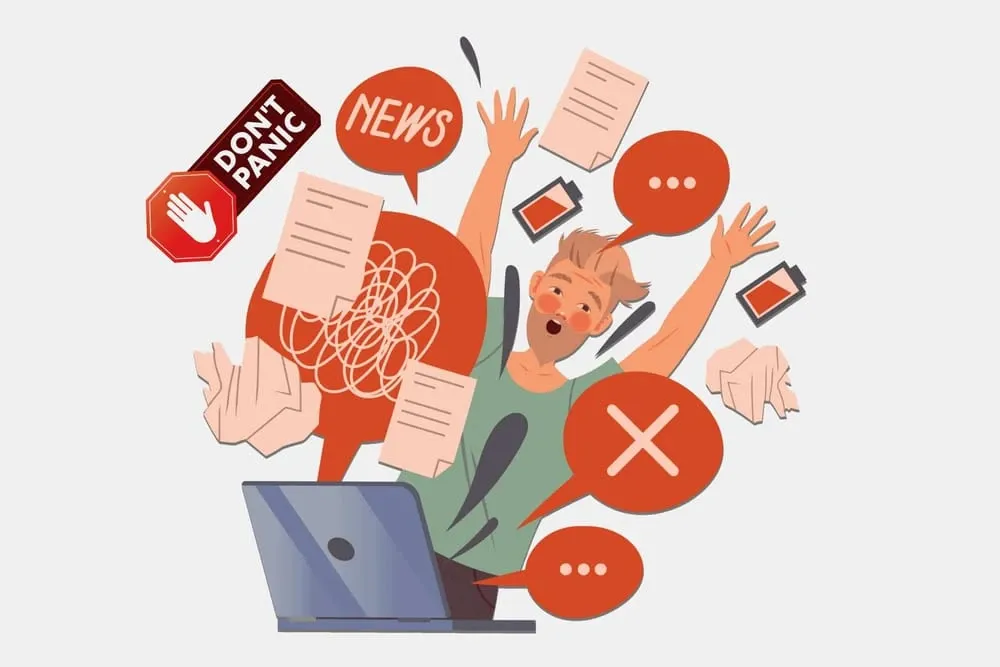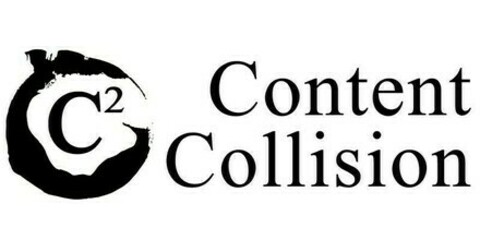PR crisis checklist: what to do in the first 24 hours
Bad days can strike fast. Use this 24-hour checklist to handle a PR crisis effectively, from assessment to team communication.

Bad days happen, and today might just be that day.
A PR crisis can strike from anywhere — a viral social media post, a product issue, or even a comment from an executive. When a crisis hits, the first 24 hours are critical. How you respond will determine the extent of the damage.
This guide provides marketers with a step-by-step checklist to manage the situation effectively, including the crucial role of company leaders and key stakeholders.
1. Identify the crisis immediately
The sooner you recognize a problem, the faster you can respond. Monitoring brand mentions and customer feedback across all channels helps you detect issues early, preventing misinformation from spreading unchecked.
Real-time alerts using social listening tools can provide the first signs of trouble, allowing your team to mobilize quickly. Quick detection also gives you a chance to notify company leadership and relevant stakeholders, so they can prepare for immediate decision-making.
In the case of the Southwest Airlines Flight 1380 incident, the company swiftly recognized the severity of the engine explosion by closely monitoring social media and news coverage. This rapid awareness enabled them to respond proactively as the crisis unfolded, rather than playing catch-up later.
What to do:
- Use social listening tools (e.g., Mention, Brandwatch) for real-time alerts.
- Monitor social media, news outlets, and customer service channels for signs of trouble.
- Notify key stakeholders and leaders immediately about potential issues.
2. Assemble your crisis response team, including leadership
A well-coordinated response starts with assembling a focused crisis team. This group should include key players such as the marketing lead, social media manager, customer service head, legal advisor, and a designated spokesperson.
Crucially, senior executives must be involved from the outset to provide strategic guidance and authorize major decisions. Having a clear structure prevents confusion and ensures that every member knows their role, which is essential for delivering a consistent message.
When KFC faced a chicken shortage in the UK, the company immediately brought together its core crisis team, including senior leaders. This enabled them to quickly align on their strategy and approve the bold, humorous "FCK" apology campaign, which turned a potential disaster into a PR success.
What to do:
- Gather the core response team: marketing lead, social media manager, customer service head, legal advisor, spokesperson, and a senior executive (CEO or CMO).
- Assign clear roles, including decision-makers and those handling media inquiries.
- Establish a dedicated communication channel (e.g., a Slack channel or WhatsApp group) for rapid updates and coordination.
Preparing a crisis response team is just the first step. Many of the lessons learned from 2024's biggest PR crises highlight the importance of readiness and having a proactive plan in place.
This approach aligns with the broader strategies discussed in our article Planning for 2025? Top PR lessons from 2024 you don’t want to miss where we explore crisis management tactics that can help you navigate future challenges with confidence.

3. Assess the situation and gather facts with stakeholder input
Before rushing to make public statements, it’s vital to understand the full scope of the crisis. Accurate, comprehensive information allows your team to craft a response based on facts rather than speculation.
This step involves consulting with internal departments, gathering reports from customer service, and checking legal implications with advisors. Involving stakeholders ensures that your response reflects all perspectives and addresses any concerns they may have.
For KFC, a swift assessment of the supply chain issue revealed the root cause of the chicken shortage. This thorough fact-finding process helped the company decide on a transparent approach, informing their customers about the situation and setting the stage for a humorous public apology.
What to do:
- Create a brief situation report, detailing what happened, who is affected, and the immediate impact.
- Share the report with senior leaders and key stakeholders for their input and validation.
- Align on the facts before crafting any public communication.
4. Draft an initial holding statement with leadership approval
During a crisis, silence can quickly be interpreted as negligence or indifference. An initial holding statement acknowledges the issue while you gather more information. This statement should be brief, factual, and approved by senior executives to ensure it aligns with the company’s stance.
It’s not about providing all the answers immediately, but rather about showing that you are aware and actively working to resolve the situation.
In the aftermath of the Flight 1380 incident, Southwest Airlines’ CEO issued a holding statement expressing empathy and concern for the affected passengers. The prompt communication helped to reassure the public and demonstrated the company’s commitment to transparency.
What to do:
- Write a short, factual statement like: “We are aware of the situation and are investigating. We will share updates as soon as more information becomes available.”
- Avoid making promises or speculating on unverified details.
- Get approval from senior leadership before sharing the statement publicly.
5. Monitor the narrative and sentiment online with stakeholder awareness
Public sentiment can shift rapidly in a crisis, making it critical to track the online conversation closely. Monitoring tools can help you keep an eye on trending topics, influential voices, and overall sentiment.
Sharing updates with key stakeholders allows them to stay informed and provides input on any necessary adjustments to the response strategy.
During the chicken shortage crisis, KFC carefully monitored public sentiment. They noticed that their customers were responding well to humor, which influenced their decision to release the witty "FCK" bucket ad. This real-time adjustment helped the company turn a potentially damaging situation into an opportunity to connect with their audience.
What to Do:
- Use tools like Hootsuite or Sprout Social to track relevant keywords and hashtags.
- Monitor influencer comments, media coverage, and overall public sentiment.
- Share key updates with stakeholders, highlighting any significant changes or misinformation.
6. Respond on priority channels first with support from leaders
To manage a crisis effectively, address it on the platforms where it is gaining the most traction, usually starting with social media.
Having leadership involved, either directly or through a designated spokesperson, shows the public that the company is taking the matter seriously. Responding promptly on priority channels helps contain misinformation and reassures your audience that you are handling the issue.
California Pizza Kitchen effectively used TikTok to respond to a viral customer complaint. By engaging on the same platform where the issue started, the brand was able to connect directly with the audience and address the problem head-on, demonstrating a keen awareness of the importance of meeting customers where they are.
What to do:
- Post your holding statement on primary platforms (Twitter, Facebook, LinkedIn).
- Send an email update to affected customers if necessary.
- Ensure any public statements are approved by senior leaders for consistency.
7. Inform your team and stakeholders internally
While external communication is crucial, it’s equally important to keep your internal team informed. Consistent updates ensure that all employees understand the situation and are equipped to respond if approached by the media or customers. This step also involves coordinating with stakeholders to maintain a unified message across the company.
Southwest Airlines kept its employees informed throughout the Flight 1380 crisis, sharing the latest updates and key talking points. This proactive internal communication helped ensure that staff could relay accurate information, reducing confusion and maintaining consistency in the public response.
What to do:
- Send an internal memo to all employees, providing a brief update on the situation, key talking points, and the company’s stance.
- Involve senior leaders in delivering the message to reinforce its importance.
- Provide clear instructions on handling inquiries and direct all external communication to the spokesperson.
8. Plan next steps for a full response with stakeholder involvement
The initial response is only the beginning. Once the immediate situation is under control, involve stakeholders and leadership in developing a comprehensive follow-up plan. This should include corrective actions, public statements, and long-term measures to prevent similar issues in the future. A well-rounded plan helps rebuild trust and shows that your company is committed to addressing the root causes of the crisis.
After the engine explosion incident, Southwest Airlines quickly implemented a full response plan. This included offering financial compensation and counseling services for affected passengers, demonstrating a thorough approach to customer care and accountability.
What to do:
- Hold a debrief meeting with the crisis response team, including senior executives and key stakeholders.
- Develop a detailed action plan, covering public statements, corrective actions, and long-term solutions.
- Assign follow-up tasks, such as preparing a formal apology or implementing changes to prevent future crises.
The first 24 hours of a PR crisis are decisive. With this checklist, marketers can take immediate, organized steps to manage the situation effectively.
By involving senior leadership and key stakeholders throughout the process, you ensure a coordinated response that maintains control of the narrative and demonstrates accountability.
Act quickly, communicate clearly, and plan thoroughly to minimize damage and start rebuilding trust from the very start.
Frequently Asked Questions (FAQs)
What are PR crises?
PR crises are events or situations that harm a company’s reputation, such as negative media coverage, social media backlash, product issues, or leadership missteps. They can lead to public distrust and require swift, strategic communication to manage.
What is an example of the PR crisis in 2024?
In 2024, California Pizza Kitchen faced a PR crisis after a customer complaint went viral on TikTok. The brand responded quickly on the same platform with a lighthearted video, turning the negative buzz into positive engagement.
What is crisis PR team?
A crisis PR team is a group of key company representatives, including marketing leads, legal advisors, and senior executives, assembled to manage communication during a crisis. They handle decision-making, messaging, and media relations to control the narrative.
What is a PR situation?
A PR situation refers to any event or issue that requires public communication from a company. It can range from routine updates to managing a crisis, involving media relations, stakeholder engagement, and messaging strategies.
Sources:
- https://www.pushkinpr.com/blog/what-pr-crisis-denver-colorado-public-relations-firm/
- https://www.prezly.com/academy/best-managed-pr-crises



